At the end of the 14th century, an unexpected palatial accident during a brazen masquerade ball, when the costumes that some participants were wearing caught fire, ended with the death of four of them and was about to kill King Charles VI of France as well. The quick intervention of his aunt saved his life, but the event felt very bad among the people, who demanded apologies and atonement for the profane tone of the event.
Charles VI of Valois was a beloved sovereign, as evidenced by the fact that one of the nicknames with which he has gone down in history is the Well Beloved . He was born in Paris in 1368 and came to the throne on the death of his father in 1380, so he was only twelve years old; that is why his uncle, the Duke of Burgundy Philip II, exercised a regency until 1388, although this did not prevent the young king from marrying Elisabeth of Bavaria-Ingolstadt in 1385.
It should be noted that since he was a child he had been named lord of the Dauphiné (an old province in southeastern France that encompassed part of what is now Switzerland) and since then the heir to the Gallic crown would receive the title of Dauphin as a rule.
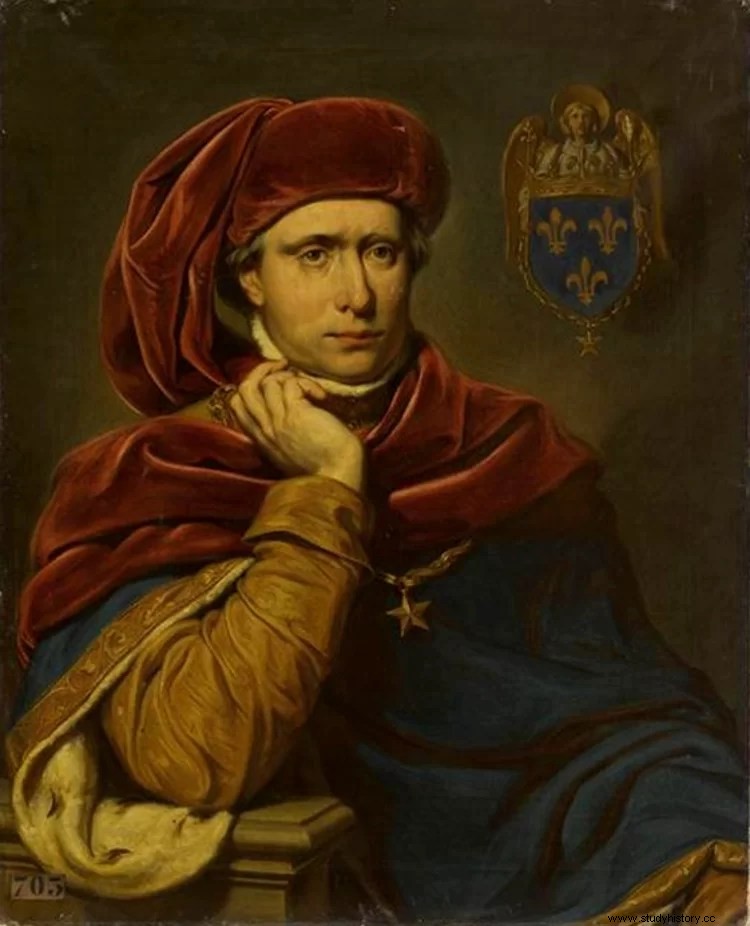
Beginning in 1392, when he was twenty-four years old, he began to suffer from psychotic attacks. During a military campaign in Brittany, he turned sword in hand against his own men, killing several knights in his retinue and forcing his uncle to temporarily take over the regency again.
Later came more episodes, in which Carlos forgot his name and escaped from his relatives, without even recognizing his children, wandering naked through the palace while screaming, refusing to bathe and believing he was made of glass. . Current medical researchers identify these symptoms with diseases such as schizophrenia, bipolar disorder or porphyria, hence the nickname outlined above.
That is why his good beginnings, so energetic and determined that they led him to drive away the Duke of Burgundy and choose his own advisers, were soon diluted and his bizarre behavior became habitual, earning him another nickname:the crazy . This caused him to be popularly suspected of attracting the wrath of God and to be subjected to exorcisms.
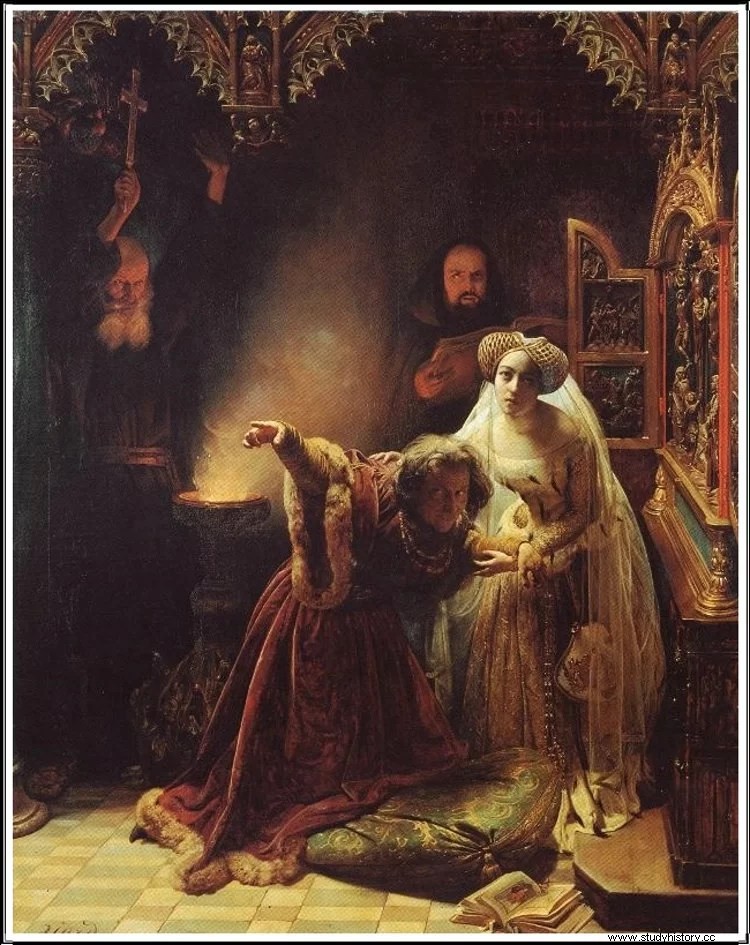
The doctors advised keeping him away from the concerns of the government and surrounding him with a relaxed atmosphere, so they began to organize frequent parties in which the attendees wore extravagant dresses and accessories. It was then that the use of hennin spread. , a conical headdress that was beginning to become fashionable among noble ladies and that in the French court adopted the double version, even forcing the doors to be widened.
This was detrimental to the image of the queen, who was held responsible for all the ills of her husband, both for distracting him from her duty and for the mere fact of being a foreigner. But at court it was considered that he was at least useful in taking care of the sick king and allowing the Duke of Burgundy to rule, which incidentally took away from the throne the monarch's younger brother, Louis, Duke of Orleans, who did not hide his aspiration to succeed. the disabled Carlos. And it is that Luis did not enjoy popular sympathy either.
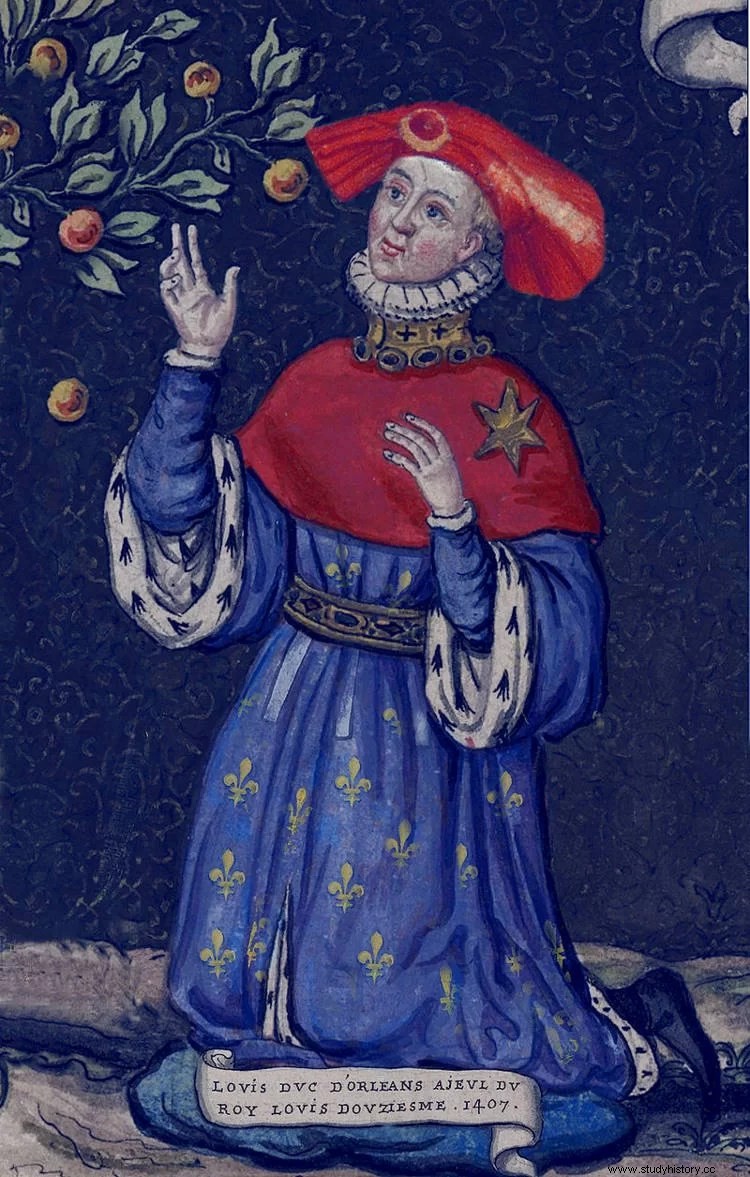
He was four years younger and had almost married Catherine of Hungary, which would have given him the crown of that country; however, the Magyar nobility objected and he ended up marrying Valentina Visconti, daughter of Isabel de Valois and Gian Galeazzo Visconti, a lord of Milan detested for her brutality.
Neither Luis nor his wife were seen with good eyes, something that worsened when the rumor spread that he had hired an apostate monk to provide him with black magic; moreover, there would later be theologians like Jean Petit who would testify to the truth of that story, thus providing a "logical" explanation for the dancing incident.
Furthermore, there were veiled accusations of attempted regicide against Louis because that campaign in which Charles VI suffered his first psychotic break was aimed at capturing Pierre de Craon, a nobleman who was opposed to Constable Olivier V de Clisson, whom he tried to assassinate. Olivier, son of the famous Juana de Belleville (whom we talked about in another article), was one of the king's favorites while Pierre enjoyed the friendship of Luis. In reality, he had disowned him for airing a love infidelity of his, but his relationship was already deeply rooted in the town and the rumor spread that he had tried to kill his brother.
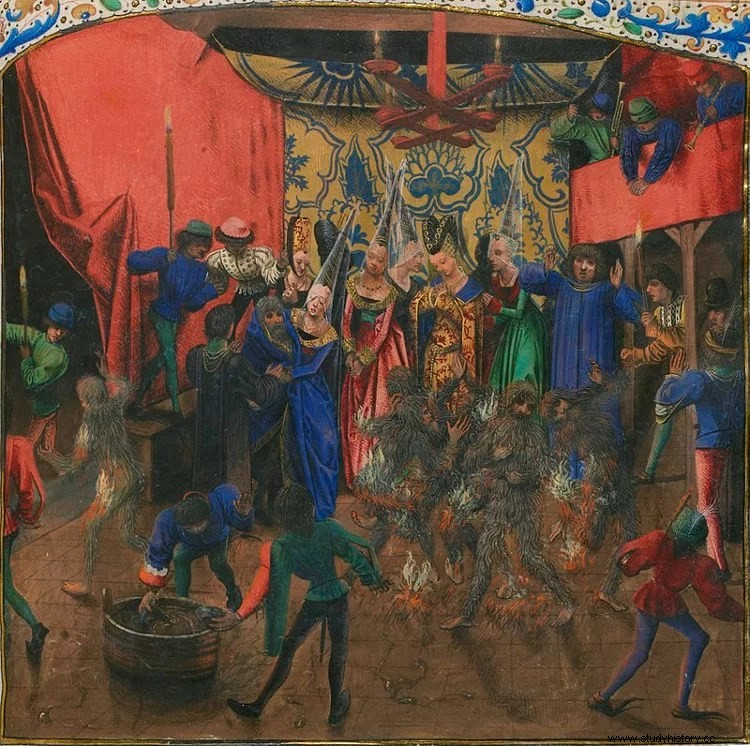
This attempt was the one outlined at the beginning, the so-called Bal des Ardents . It was January 28, 1393 when the umpteenth party was organized at the Hôtel Saint-Pol, the royal residence located to the southwest of the Parisian neighborhood of l'Arsenal that Charles V, the father of the current monarch and Louis, had rehabilitated and converted at the courthouse. The reason for the event was the wedding of Catherine de Fastaverin, lady-in-waiting to the queen. It was already Catherine's third marriage and as it was traditional for a widow's wedding to be celebrated with a burlesque tone, part of the splendor consisted of a charivari , that is to say, a kind of parade with costumes during which a lot of noise was made hitting pots and pans; sometimes a prisoner was mortified, although this was not the case here.
That charivari it consisted of half a dozen high-ranking knights performing a dance dressed as wild men. This was a frequent mythological figure in medieval literature and art, a human being represented covered with hair -sometimes also with vegetation- and carrying a club that lived in the woods in a completely feral state; therefore, with an animal behavior, uncontrolled, similar to that of the classic satyrs. The six dancers wore linen costumes with resin-bonded linseed plants. Likewise, they were masked to hide their identity, since they jumped frantically and uttered lewd shouts that a priori They did not seem typical of their condition, prompting those present to find out their identity.
Given the flammability of the suits, it was forbidden to have a fire nearby, but Luis arrived late and drunk, carrying a torch. And fatality happened. To try to recognize one of the participants, the king's brother brought the fire close to his face and an ember fell on the deceased, engulfing him instantly in flames... which spread to the others -according to one version they were linked with chains-, turning the party in chaos:the dancers running from one side to the other turned into living torches and screaming in pain, the spectators screaming in horror and some also suffering burns when trying to help them, the queen fainting because she knew that one of the masked men was her husband... 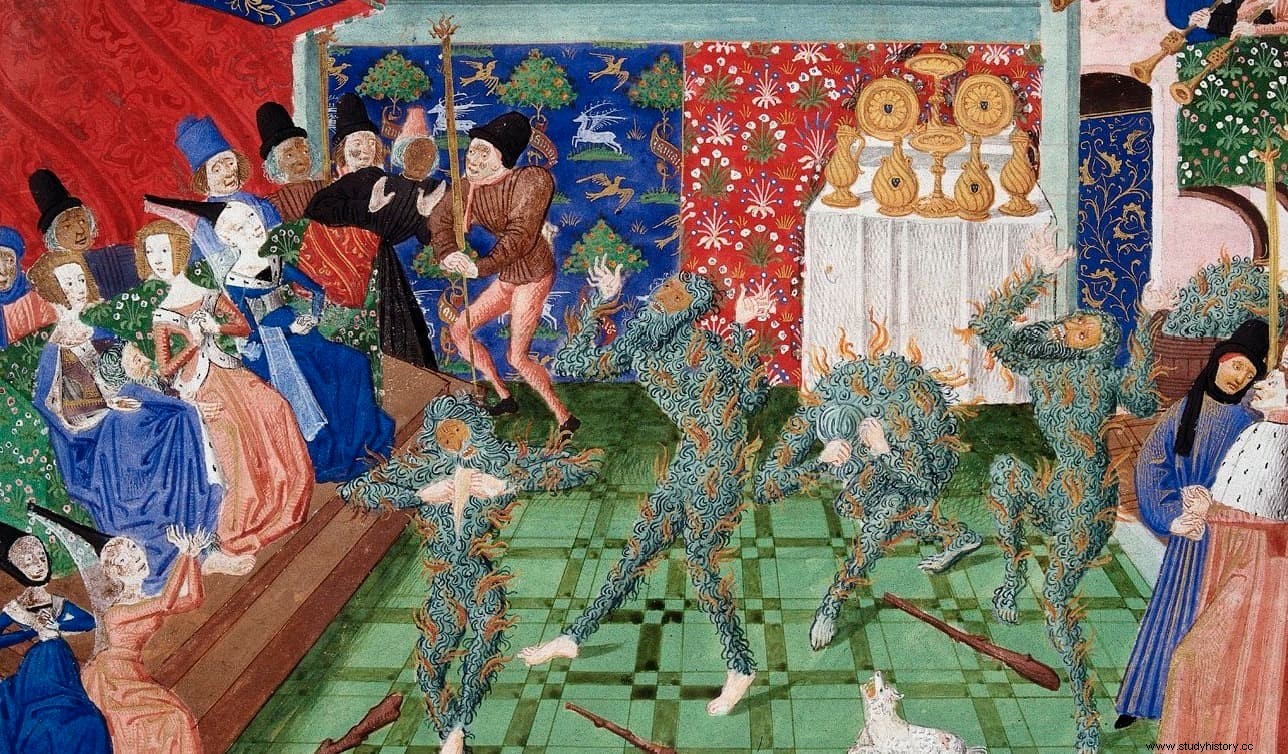
Actually, the king got off scot-free because he was a bit distant from his companions, talking to his aunt Jeanne de Boulogne, Duchess of Berry, who, despite being only fifteen, reacted promptly by quelling her nephew's incipient fire with her hand. voluminous train of her dress. The Count of Joigny was not so lucky, who perished charred on the spot, as well as Yvain de Foix (son of the Count of Foix), Aimery Poitiers (son of the Count of Valentinois) and Huguet de Guisay (the one who had called the event), who died over the next two days in excruciating agony. The other survivor was the Sieur de Nantouillet, who dove into a vat of wine.
That tragedy was popularly perceived as a divine punishment for the frivolity of the court and outraged people because the monarch had been put in danger, blaming his brother Luis for him, as we saw. The situation was very tense and everyone remembered the Maillotin uprising. , a revolt that took place in 1382 as a result of the restoration of the taxes that Charles V had suppressed shortly before his death and that condemned a people to misery in a continuous state of devastation due to the endless Hundred Years' War.
The insurrection, which had had an immediate precedent in the Harelle of Normandy and before in the Grande Jacquerie , was started by the guilds of Rouen and spread to other cities. It was eventually suppressed but left a moat of fear in the wealthy classes.
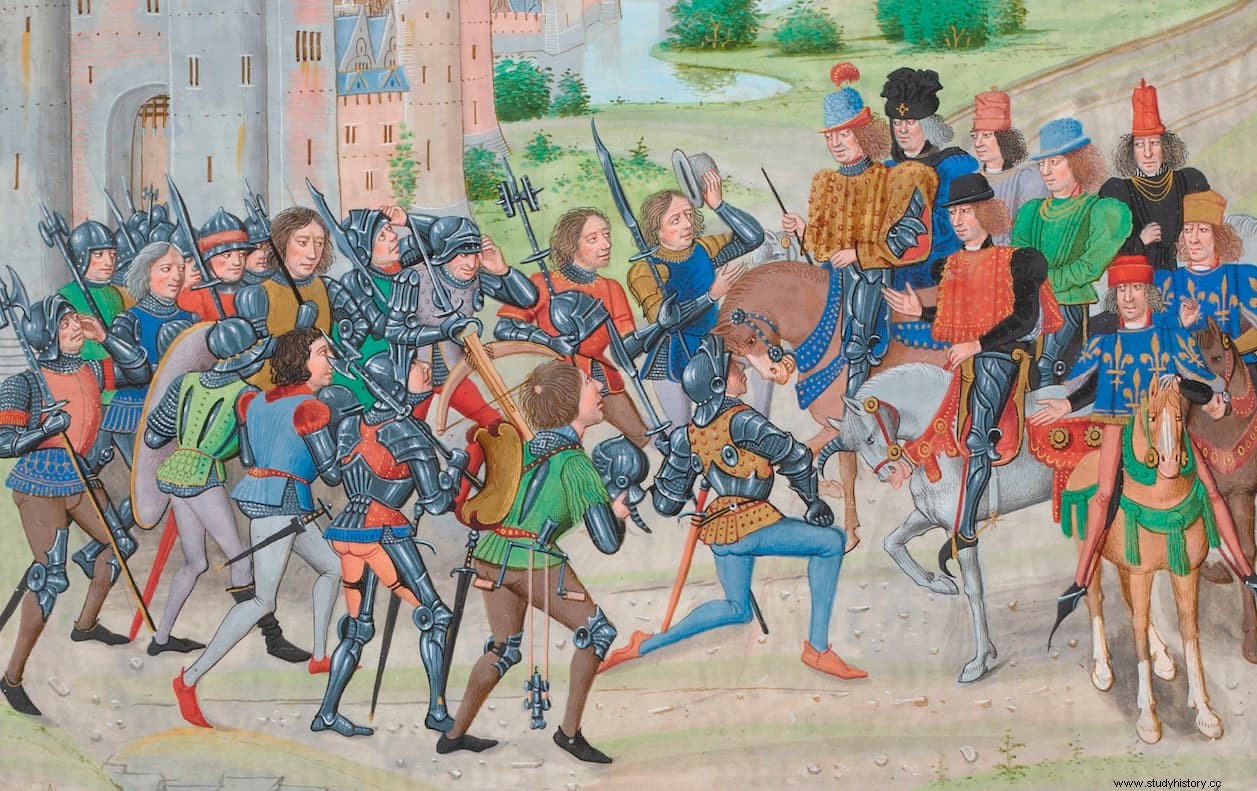
Consequently, seeking general appeasement, the Duke of Burgundy convinced his nephew to lead a penitential procession attended by the entire court, marching through the streets of the capital to Notre-Dame Cathedral with the monarch on horseback but all his entourage on foot. Luis, whose responsibility was greater and aroused criticism around him, even financed a chapel in the monastery of the Celestine Order out of his own pocket.
The Bal des Ardents It was a shock important enough for several chroniclers to reflect it in his works, the most important being Jean Froissart ( Chronicles ) and the one known as the Monk of Saint-Denis (History of Charles VI ), written respectively five and ten years after the events, without knowing for sure if they were witnesses because they differ in some details. The royal jurist and provost of the merchants of Paris, Jean Juvénal des Ursins, also reviews it, as well as the illustrations of several illuminated codices.
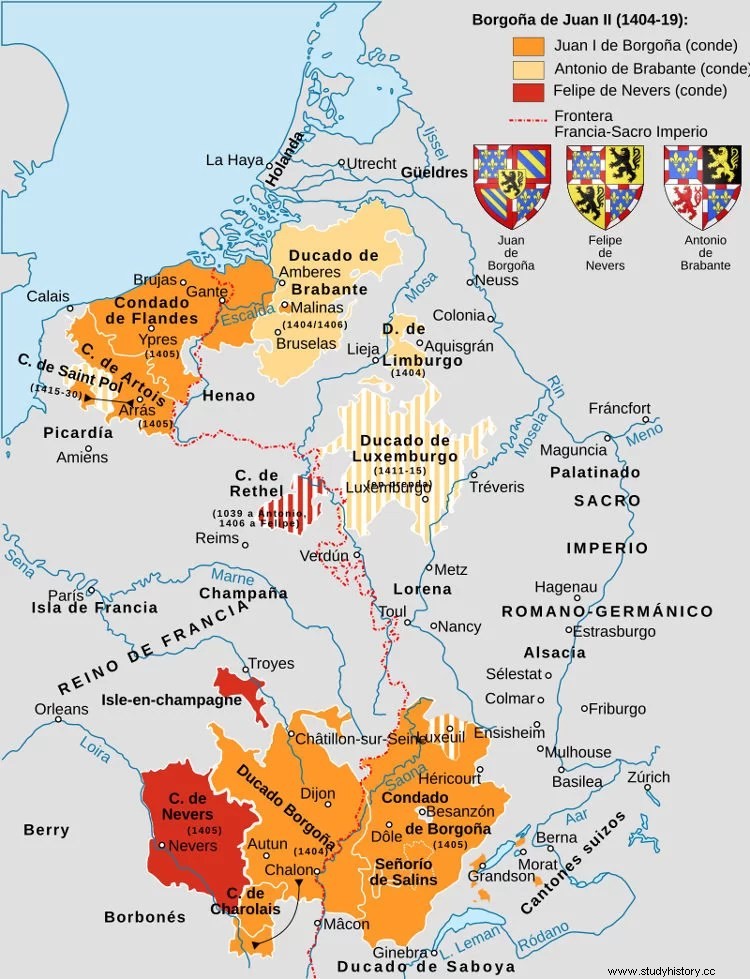
The reign of Carlos VI was not exactly brilliant. He tried to achieve peace with England by marrying his daughter Elizabeth to Richard II, but he failed and the war ensued, at double risk for a divided France. With the king now completely incapacitated, his brother Louis became entangled with the new Duke of Burgundy, John Fearless , for protecting his nephews. But the unpopularity he suffered and a new rumor that attributed to him an affair with his sister-in-law, the queen, made him lose positions and finally it was his rival who obtained the appointment of guardian of the dauphin and regent.
A confrontation between the Burgundian side, led by John supported by the common people and the guilds, and the Armagnac side, led by Louis and the nobility, seemed inevitable, but the Duke of Berry managed to get them to accept an official reconciliation in 1407. However, Three days later, Luis was assassinated by assassins under Juan's orders, who left him dying in the street after amputating all four of his limbs. The person in charge not only did not deny it but he boasted about it.
That initially tipped the balance in his favor, but in 1413 Louis's son, Charles, took command of the Armagnac side and reversed the situation. Juan had to seclude himself in Burgundy and those dissensions made it easier for the country to be invaded by an English army, allied with Burgundy and personally led by Henry V. His victory at Azincourt (1415) led to the signing of the Treaty of Troyes in 1420, in which a completely gone Carlos VI recognized the English as successor to the throne, granted him the hand of his daughter Catalina and declared his own son a bastard. However, he relieved him on the throne as Carlos VII when his father died in 1422.
